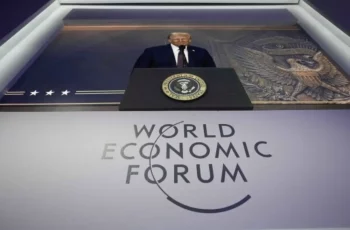
Armenia might defect from the CSTO while Turkish and NATO influence could surge all along Russia’s southern periphery, which might embolden Azerbaijan and Turkmenistan to defy Iran and Russia by building the Trans-Caspian Gas Pipeline if the West promises them Ukrainian-like military support.
The American, Armenian, and Azerbaijani leaders jointly unveiled the “Trump Route for International Peace and Prosperity” (TRIPP) during their meeting at the White House on Friday. Previously known as the “Trump Bridge” per related media reports, it’s essentially the US replacement of the corridor that Russia envisaged in the November 2020 ceasefire that it mediated between those two rivals. Here are five background briefings about how this threatens to undermine Russia’s broader regional position:
* 1 July: “The Latest Trouble In Russian-Azerbaijani Relations Might Be Part Of A Turkish-US Powerplay”
* 2 July: “Why’d Erdogan Decide To Expand Turkiye’s Sphere Of Influence Eastwards?”
* 3 July: “Aliyev Expects To Rise To Global Stardom By Stirring Up Highly Publicized Trouble With Russia”
* 4 July: “The Kremlin Believes That ‘Certain Forces’ Want To Disrupt Russian-Azerbaijani Relations”
* 6 August: “The ‘Trump Bridge’ Could Lead To Russia’s Expulsion From The South Caucasus”
To summarize, the US’ replacement of Russia in what Azerbaijan had up until now called the Zangezur Corridor removes Moscow’s ability to monitor Turkish arms exports to Central Asia, which could turbocharge its influence among Kazakhstan and Kyrgyzstan with time. Those two are part of the Russian-led CSTO and the Turkish-led “Organization of Turkic States” (OTS), and it’s possible that the OTS might one day assume CSTO-like security functions that lead to those two’s defection from the CSTO.
The US would encourage that as a means of completing its long-attempted encirclement of Russia. Moreover, the thaw in Armenian-Azerbaijani and correspondingly also Armenian-Turkish tensions could justify Yerevan’s official withdrawal from the CSTO (it already suspended its membership), which could then quickly lead to it, Azerbaijan, and Kazakhstan working more closely with NATO. The removal of US legislative restrictions on military cooperation with Azerbaijan might make this a fait accompli.
These likely outcomes – the expansion of Turkish/OTS influence into Central Asia via TRIPP, Armenia’s official defection from the CSTO, and more US-led NATO influence all along Russia’s southern periphery – would already pose a formidable enough challenge to Russia’s broader regional position. It might get even worse though if the aforesaid scenario sequence emboldens Azerbaijan and Turkmenistan (at the US and Turkiye’s urging) to unilaterally construct the long-discussed Trans-Caspian Gas Pipeline.
The West has hitherto been unable to tap Turkmenistan’s gigantic gas reserves due to Afghanistan’s instability, the sanctions on Iran, and Iran and Russia opposing an underwater pipeline on environmental grounds (but which cynics suspect is meant to keep a major rival out of the global market). Even so, US and Turkiye might think that Iran and Russia are weaker than ever, thus gambling that they can get them to agree under the threat of backing Azerbaijan with Ukrainian-like military support if war breaks out.
To be clear, neither Azerbaijan nor Turkmenistan has hinted at plans to violate the 2018 Caspian Sea Convention for regulating all five littoral states’ activities in this body of water, but the scenario can’t confidently be ruled out by Russian policymakers given their historic distrust of the West. It’s unclear what they might do to preempt this latent threat to their country’s broader regional position, both the Caspian Conflict scenario and everything that could precede it, but they’re unlikely to take it lying down.
Source: author’s blog










Comments